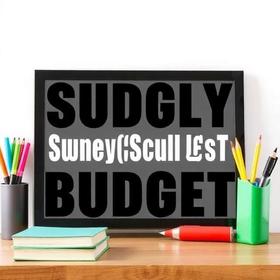Top Rankings
Sugar-Salem Joint School District ranks among the top 20% of public school district in Idaho for:
Category
Attribute
Graduation Rate
Highest graduation rate (Top 1%)
Community Size
Largest student body (number of students) (Top 1%)
For the 2025-26 school year, there are 4 public elementary schools serving 1,577 students in Sugar-Salem Joint School District. This district's average elementary testing ranking is 8/10, which is in the top 30% of public elementary schools in Idaho.
Public Elementary Schools in Sugar-Salem Joint School District have an average math proficiency score of 47% (versus the Idaho public elementary school average of 42%), and reading proficiency score of 60% (versus the 54% statewide average).
Minority enrollment is 13% of the student body (majority Hispanic), which is less than the Idaho public elementary school average of 27% (majority Hispanic).
Overview
This School District
This State (ID)
# Schools
6 Schools
597 Schools
# Students
2,199 Students
214,917 Students
# Teachers
107 Teachers
12,168 Teachers
Student-Teacher Ratio
21:1
21:1
Student By Grade
District Rank
Sugar-Salem Joint School District, which is ranked within the top 50% of all 172 school districts in Idaho (based off of combined math and reading proficiency testing data) for the 2022-2023 school year.
The school district's graduation rate of 92% has increased from 90-94% over five school years.
Overall District Rank
#50 out of 172 school districts
(Top 30%)
(Top 30%)
Math Test Scores (% Proficient)
45%
41%
Reading/Language Arts Test Scores (% Proficient)
58%
55%
Science Test Scores (% Proficient)
26%
41%
Graduation Rate
92%
80%
Students by Ethnicity:
Diversity Score
0.23
0.43
% American Indian
n/a
1%
% Asian
1%
1%
% Hispanic
9%
20%
% Black
1%
1%
% White
87%
73%
% Hawaiian
n/a
n/a
% Two or more races
2%
4%
All Ethnic Groups
District Revenue and Spending
The revenue/student of $7,302 in this school district is less than the state median of $10,185. The school district revenue/student has declined by 28% over four school years.
The school district's spending/student of $5,571 is less than the state median of $9,364. The school district spending/student has declined by 28% over four school years.
Total Revenue
$16 MM
$3,215 MM
Spending
$12 MM
$2,956 MM
Revenue / Student
$7,302
$10,185
Spending / Student
$5,571
$9,364
Best Sugar-Salem Joint School District Public Elementary Schools (2025-26)
School
(Math and Reading Proficiency)
(Math and Reading Proficiency)
Location
Quick Facts
Rank: #11.
Kershaw Intermediate School
(Math: 52% | Reading: 64%)
Rank:
Rank:
9/
Top 20%10
610 East 3rd North Street
Sugar City, ID 83448
(208) 356-0241
Sugar City, ID 83448
(208) 356-0241
Gr: 3-5 | 328 students Student-teacher ratio: 18:1 Minority enrollment: 10%
Rank: #22.
Sugar-salem Junior High School
(Math: 47% | Reading: 56%)
Rank:
Rank:
7/
Top 50%10
205 East 3rd North
Sugar City, ID 83448
(208) 356-4437
Sugar City, ID 83448
(208) 356-4437
Gr: 6-8 | 349 students Student-teacher ratio: 15:1 Minority enrollment: 11%
Rank: #33.
Central Elementary School
(Math: 40-44% | Reading: 45-49% )
Rank:
Rank:
5/
Bottom 50%10
102 North Park Avenue
Sugar City, ID 83448
(208) 356-9351
Sugar City, ID 83448
(208) 356-9351
Gr: PK-2 | 330 students Student-teacher ratio: 17:1 Minority enrollment: 14%
Rank: n/an/a
10 North Cutler
Sugar City, ID 83448
(208) 356-4437
Sugar City, ID 83448
(208) 356-4437
Gr: K-12 | 570 students Student-teacher ratio: 48:1 Minority enrollment: 16%
Recent Articles

Public School Open House & Enrollment Season Guide
A parent-focused guide to the public school open house and enrollment season, with expert questions, timelines, and decision tips.

School Supply Budget 2026: Fees, Books, Tech Costs
School Supply Budget 2026 guide for parents, covering fees, textbooks, technology, and hidden extras to plan ahead.

Education Funding in America (2025 Update)
Comprehensive 2025 update on public school funding in America, new federal and state policies, per-pupil spending, and equity challenges.





